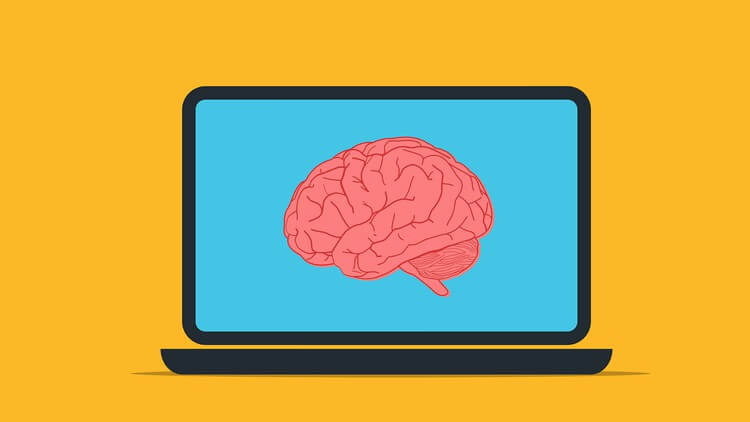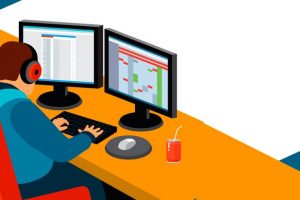2023 Python for Machine Learning: A Step-by-Step Guide
Data Science Projects with Linear Regression, Logistic Regression, Random Forest, SVM, KNN, KMeans, XGBoost, PCA, etc
What you’ll learn
2023 Python for Machine Learning: A Step-by-Step Guide
-
The fundamental concepts and techniques of machine learning, including supervised and unsupervised learning
-
The implementation of various machine learning algorithms such as linear regression, logistic regression, k-nearest neighbors, decision trees, etc.
-
Techniques for building and evaluating machine learning models include feature selection, feature engineering, and model evaluation techniques.
-
The different types of model evaluation metrics, such as accuracy, precision, and recall, and how to interpret them.
-
Using machine learning libraries such as sci-kit-learn and pandas to build and evaluate models.
-
Hands-on experience working on real-world datasets and projects that will allow students to apply the concepts and techniques learned throughout.
-
The ability to analyze, interpret and present the results of machine learning models.
-
Understanding the trade-offs between different machine learning algorithms and their advantages and disadvantages.
-
Understanding best practices for developing, implementing, and interpreting machine learning models.
-
Skills in troubleshooting common machine learning problems and debugging machine learning models.
Requirements
-
Some Concepts of Programming
-
Elementary Mathematics
-
Desire to learn
Description
Welcome to our Machine Learning Projects course! This course is designed for individuals who want to gain hands-on experience in developing and implementing machine learning models. You will learn the concepts and techniques necessary to build and evaluate machine-learning models using real-world datasets throughout the course.
We cover the basics of machine learning, including supervised and unsupervised learning, and the types of problems that can be solved using these techniques. You will also learn about machine learning algorithms like linear regression, k-nearest neighbors, and decision trees.
ML Prerequisites Lectures
- Python Crash Course: It is an introductory course designed to help learners quickly learn the basics of Python programming language.
- Numpy: It is a Python librPythonat supports large multi-dimensional arrays of homogeneous data types and a large collection of high-level mathematical functions to operate on these arrays.
- Pandas: It is a library in Python that proPythoneasy-to-use data structures and data analysis tools. It is built on top of Numpy and is widely used for data cleaning, transformation, and manipulation.
- Matplotlib: It is a plotting library in Python that proPythona a wide range of visualization tools and supports different plots.
- Plotly: It is an open-source library in Python that proPythoninteractive and web-based visualizations.
ML Models Covered in This Course
- Linear Regression: A supervised learning algorithm for predicting a continuous target variable based on independent variables. It assumes a linear relationship between the independent and dependent variables.
- Logistic Regression: A supervised learning algorithm for predicting a binary outcome based on independent variables. It uses a logistic function to model the probability of the outcome.
- Decision Trees: A supervised learning algorithm that uses a tree-like model of decisions and their possible consequences. It is often used for classification and regression tasks.
- Random Forest: A supervised learning algorithm that combines multiple decision trees to increase the accuracy and stability of the predictions. It is an ensemble method that reduces overfitting and improves the model’s generalization.
- Support Vector Machine (SVM): A supervised learning algorithm for classification and regression tasks. It finds the best boundary (or hyperplane) that separates the different classes in the data.
- K-Nearest Neighbors (KNN): A supervised learning algorithm for classification and regression tasks. It finds the k nearest points to a new data point and classifies it based on the majority class of the k nearest points.
- Hyperparameter Tuning: It systematically searches for the best combination of hyperparameters for a machine learning model.
- AdaBoost: A supervised learning algorithm that adapts to the data by adjusting the weights of the observations. It is an ensemble method that is used for classification tasks.
- XGBoost: A supervised learning algorithm that extends a gradient-boosting algorithm. It is widely used in Kaggle competitions and industry projects.
- CatBoost: A supervised learning algorithm designed to handle categorical variables effectively.
Unsupervised Models
Clustering algorithms can be broadly classified into centroid-based, density-based, and hierarchical. Centroid-based clustering algorithms include k-means and group data points based on their proximity to a centroid or center point. Density-based clustering algorithms, such as DBSCAN, group data points based on their density in the feature space. Hierarchical clustering algorithms such as Agglomerative and Divisive build a hierarchy of clusters by either merging or dividing clusters iteratively.
- K-Means: A centroid-based clustering algorithm that groups data points based on their proximity to a centroid. It is widely used for clustering large datasets.
- DBSCAN: A density-based clustering algorithm that groups data points based on their density in the feature space. It is useful for identifying clusters of arbitrary shape.
- Hierarchical Clustering: An algorithm that builds a hierarchy of clusters by merging or dividing clusters iteratively. It can be agglomerative or divisive.
- Spectral Clustering: A clustering algorithm that finds clusters by using eigenvectors of the similarity matrix of the data.
- Principal Component Analysis (PCA): A dimensionality reduction technique projects data onto a lower-dimensional space while preserving the most important information.
Advanced Models
- Deep Learning Introduction: Deep learning is a subfield of machine learning that uses artificial neural networks with many layers, called deep neural networks, to model and solve complex problems such as image recognition and natural language processing. It is based on the idea that a neural network can learn to automatically learn representations of the data at different levels of abstraction. Multi-layer Perceptron (MLP) is a type of deep learning model that is a feedforward artificial neural network model that maps input data sets onto appropriate outputs. MLP is a supervised learning algorithm that can be used for both classification and regression tasks. MLP is based on the idea that a neural network with multiple layers can learn to learn data representations at different levels of abstraction automatically.
- Natural Language Processing (NLP): Natural Language Processing (NLP) is a field of Artificial Intelligence that deals with the interaction between human language and computers. One of the common techniques used in NLP is the term frequency-inverse document frequency (tf-idf). Tf-idf is a statistical measure that reflects the importance of a word in a document or a corpus of documents.
Are there any course requirements or prerequisites?
- No introductory skill level in Python programming required
- Have a computer (either Mac, Windows, or Linux)
- Desire to learn!
Who this course is for:
- Beginners python programmers.
- Beginners Data Science programmers.
- Students of Data Science and Machine Learning.
- Developers who want to work in analytics and visualization projects.
- Anyone who wants to explore and understand data before applying machine learning.
Throughout the course, you will have access to a team of experienced instructors who will provide guidance and support as you work on your projects. You will also have access to a community of fellow students who will provide additional support and feedback as you work on your projects.
Who this course is for:
- Data scientists, analysts, and engineers who want to expand their knowledge and skills in machine learning.
- Developers and programmers who want to learn how to build and deploy machine learning models in a production environment.
- Researchers and academics who want to understand the latest developments and applications of machine learning.
- Business professionals and managers who want to learn how to apply machine learning to solve real-world problems in their organizations.
- Students and recent graduates who want to gain a solid foundation in machine learning and pursue a career in data science or artificial intelligence.
2023 Python for Machine Learning: A Step-by-Step Guide
Excel for Data Science and Machine Learning
Get Course Now








